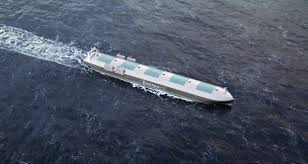
Breaking News
 Silver Stage Set for Delivery Meltdown: Keith Neumeyer Dissects COMEX, LBMA CRISIS!
Silver Stage Set for Delivery Meltdown: Keith Neumeyer Dissects COMEX, LBMA CRISIS!
 No one noticed this about Mamdani's speech
No one noticed this about Mamdani's speech
 Job Cuts Explode – Up 65 Percent Compared To Last Year – The Employment Market Has Become...
Job Cuts Explode – Up 65 Percent Compared To Last Year – The Employment Market Has Become...
Top Tech News
 HUGE 32kWh LiFePO4 DIY Battery w/ 628Ah Cells! 90 Minute Build
HUGE 32kWh LiFePO4 DIY Battery w/ 628Ah Cells! 90 Minute Build
 What Has Bitcoin Become 17 Years After Satoshi Nakamoto Published The Whitepaper?
What Has Bitcoin Become 17 Years After Satoshi Nakamoto Published The Whitepaper?
 Japan just injected artificial blood into a human. No blood type needed. No refrigeration.
Japan just injected artificial blood into a human. No blood type needed. No refrigeration.
 The 6 Best LLM Tools To Run Models Locally
The 6 Best LLM Tools To Run Models Locally
 Testing My First Sodium-Ion Solar Battery
Testing My First Sodium-Ion Solar Battery
 A man once paralyzed from the waist down now stands on his own, not with machines or wires,...
A man once paralyzed from the waist down now stands on his own, not with machines or wires,...
 Review: Thumb-sized thermal camera turns your phone into a smart tool
Review: Thumb-sized thermal camera turns your phone into a smart tool
 Army To Bring Nuclear Microreactors To Its Bases By 2028
Army To Bring Nuclear Microreactors To Its Bases By 2028
 Nissan Says It's On Track For Solid-State Batteries That Double EV Range By 2028
Nissan Says It's On Track For Solid-State Batteries That Double EV Range By 2028
Fully Autonomous Ships Almost Here

IEEE Spectrum says, Forget Autonomous Cars—Autonomous Ships Are Almost Here.
My colleagues and I at Rolls-Royce anticipate that the first commercial vessel to navigate entirely by itself could be a harbor tug or a ferry designed to carry cars the short distance across the mouth of a river or a fjord and that it or similar ships will be in commercial operation within the next few years. And we expect fully autonomous oceangoing cargo ships to be routinely plying the world's seas in 10 or 15 years' time.
That people should be seriously interested in robotic ships is easy enough to explain: Such ships are expected to be safer, more efficient, and cheaper to run. According to a report published by the Munich-based insurance company Allianz in 2012, between 75 and 96 percent of marine accidents are a result of human error, often a result of fatigue. Remotely controlled and autonomous ships would reduce the risk of such mistakes and along with it the risk of injury and even death to crew members, not to mention the dangers to the ship itself.

 America's Hidden Royalty
America's Hidden Royalty Carbon based computers that run on iron
Carbon based computers that run on iron

